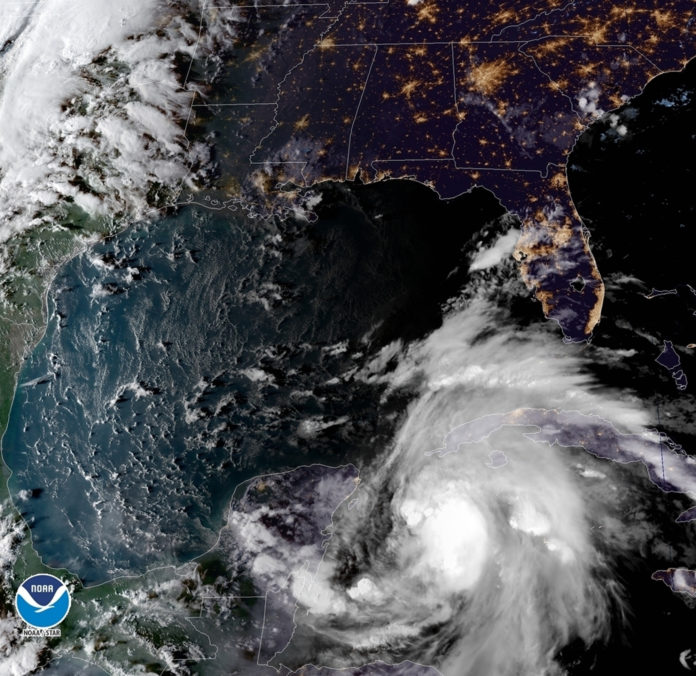
By Raegan Turner | Staff Writer
Hurricane Michael is expected to hit the panhandle of Florida on Wednesday. The hurricane has been projected to be a Category 3 storm, which is comparable to the beginning stages of Hurricane Florence that hit the Carolinas earlier this year.
Already the storm has produced 85 mph winds. However, according to the Associated Press, Michael gained new strength by nightfall and could reach major hurricane status with winds topping 111 mph before its anticipated landfall Wednesday on the Panhandle or Big Bend area of Florida, forecasters warn.
“Michael will then move farther inland across the southeastern U.S. into the late-week with gusty winds and heavy rain. This could enhance rainfall in the mid-Atlantic and southeast New England later this week,” the Weather Channel predicts.
Cedar Park senior Lisa Ruffcorn is already beginning to see the effects of the incoming hurricane. She says bad storms have already begun in the area, despite the fact that Orlando will not be directly hit.
“The news has mainly been about how it shouldn’t hit us (Orlando area). However, everyone has bought cases of water because that’s what is usually the first thing to go. I’ll probably still have to go to work because storms happen a lot here, but I don’t know how big this one’s going to be when it hits land. Today it started to storm really heavily already,” Ruffcorn said.
Gulf County, Wakulla County and Bay County in Florida have all issued mandatory evacuation for residents, urging them to leave by Thursday at the latest. These are the areas most likely to be heavily damaged during and after the hurricane hits.
Dr. Don Greene, professor of meteorology and oceanography in Baylor’s department of geosciences, identifies the point of impact of the hurricane and the danger associated with it.
“The people at greatest risk are to the right of landfall for two reasons: one, that is the strongest side of the hurricane due to the warm southern winds. Two, this is the side that develops the storm surge of waves, which can raise sea level up to eight to 10 feet. Those who live to the right of the landfall are those who need to look out,” Greene said.
Greene explains the process behind the danger by describing the cyclical movement of water in the Gulf of Mexico that he describes as similar to what occurs when a thumb is placed over a hose.
“There’s something called the ‘Gulf Loop’. Do you remember the phenomenon you experience when watering the flowers where you can put your thumb over the garden hose and make the water shoot out farther? The reason that happens is because the volume of water that exits the hose is constant — let’s say 10 gallons per minute. So, you have to get 10 gallons out of the hose, and if you constrict the opening, the water responds by accelerating. It starts going out faster because the volume is the same. This same thing happens between Cuba and Florida. In the Gulf, water is flowing counterclockwise; it comes in through the Yucatan Strait and wants to flow out South of Miami but can’t flow out as fast as it flows in. The water backs up and forms a big loop that pushes water up towards the top of Florida, which is most likely a big contributing factor to this hurricane’s intensity,” Greene said.
The hurricane’s effects will include dangerous conditions in North Florida once it finally reaches the shore and strong weather in surrounding areas until the storm passes.





